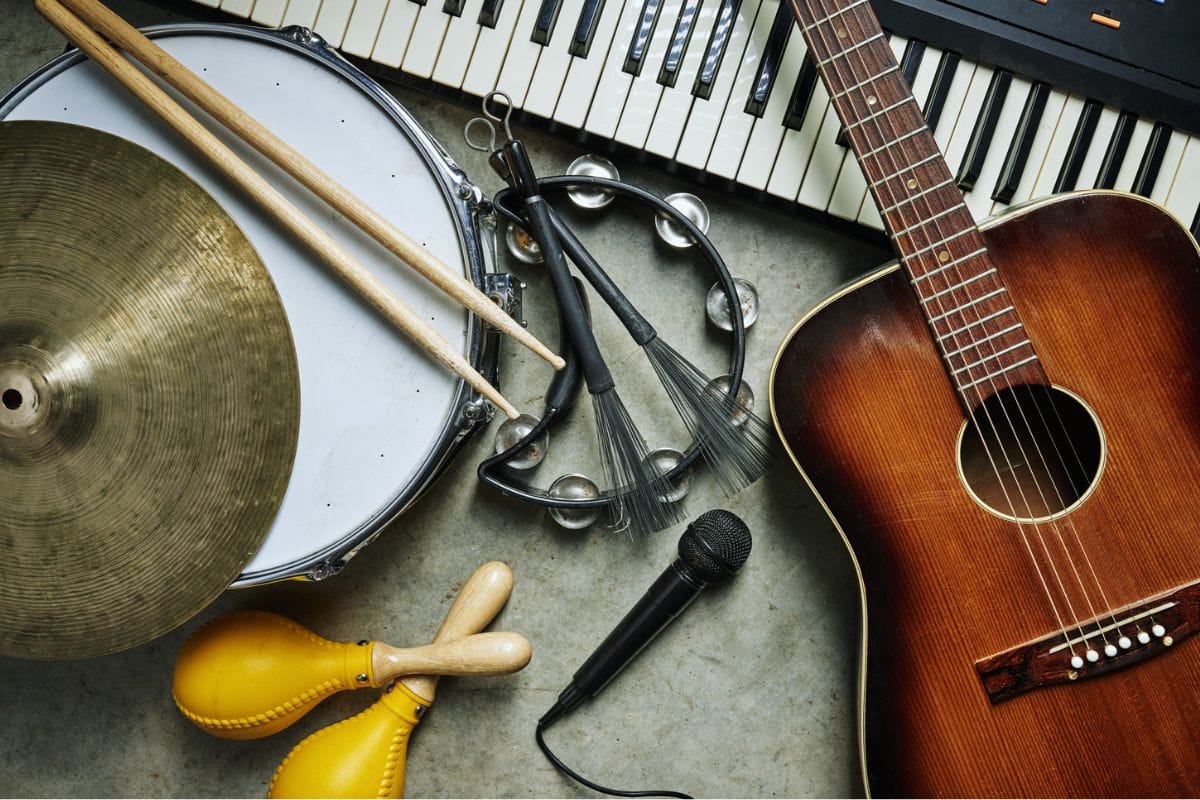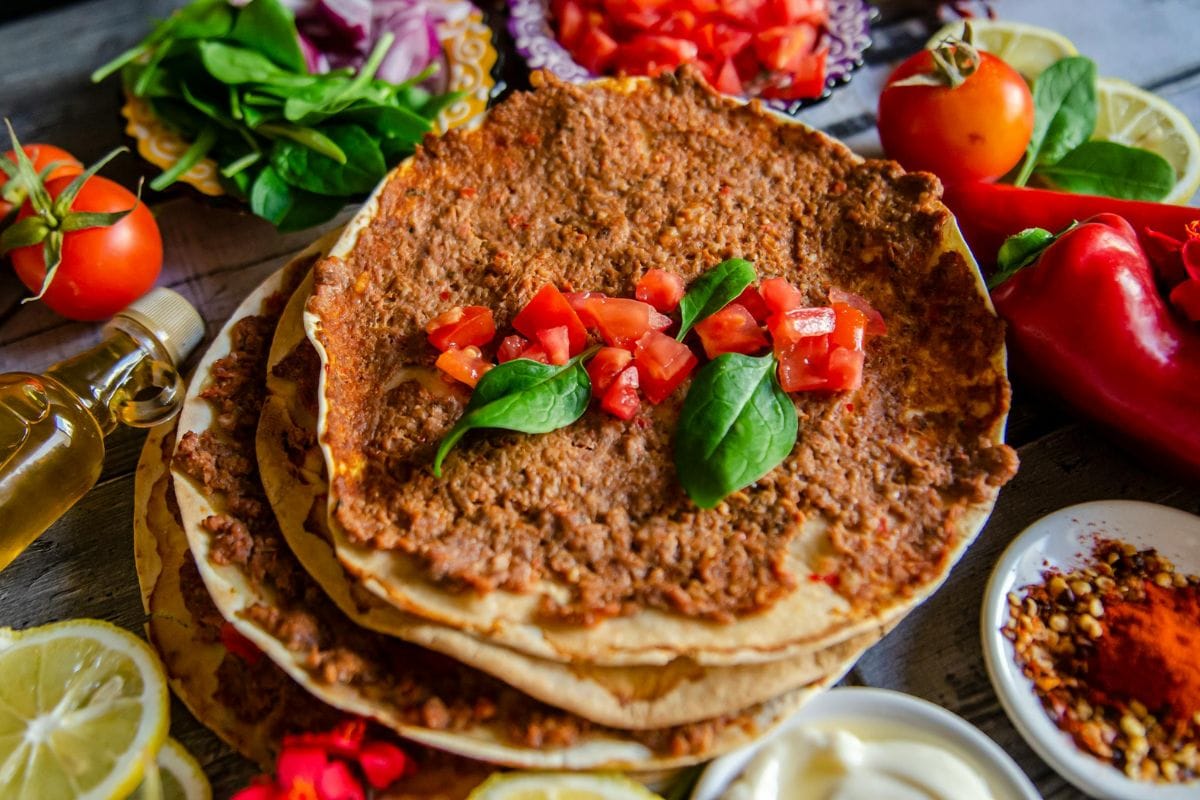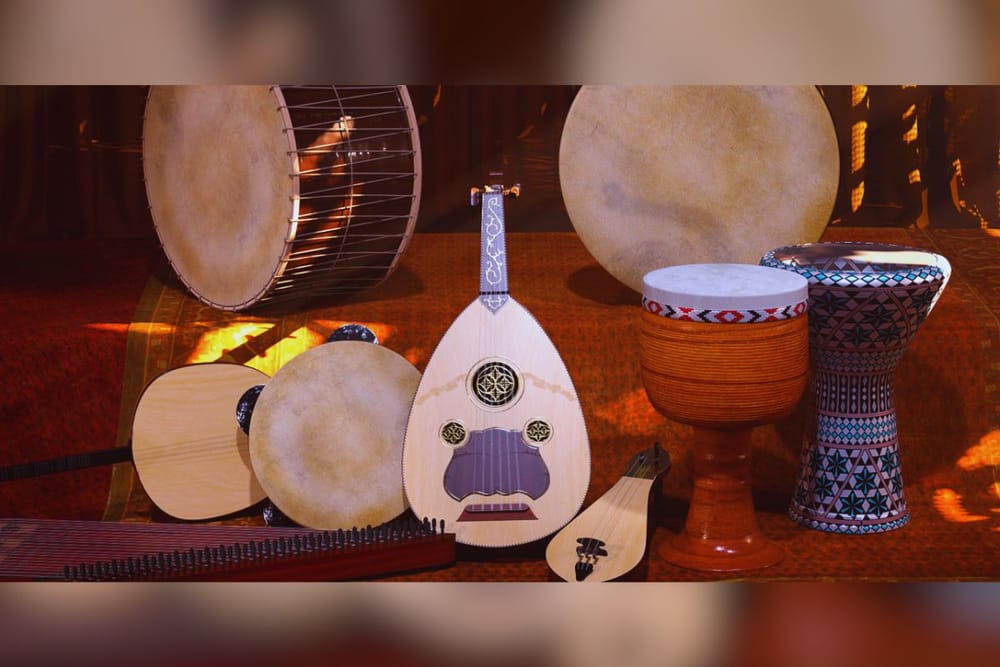The musical heritage of the Middle East is vast, stretching from North and East Africa to Central Asia, and encompasses the rich traditions of Arab, Persian, and Turkish cultures. These regions have been creating diverse music and performances for thousands of years, deeply embedded in their history and everyday life. From the pre-Islamic era to today, Middle Eastern music has evolved, capturing the essence of human emotion, history, and the spirit of community through its unique sounds and rhythms.
In the pre-Islamic era, the tradition of sung poetry was highly valued, especially among Arabs who, like many in Africa, passed down knowledge through oral stories. Music forms like 'Huda' helped caravans find solace during long journeys across deserts, while 'ghyna' and 'qaynat' inspired warriors with their epic narratives. These early musical expressions were influenced by the musical traditions of the Byzantine and Persian empires, where music was seen as a powerful force in life.
With the introduction of Islam in the seventh century, the musical landscape transformed. Ancient Greek theories on music by philosophers like Aristotle and Plato were integrated with Islamic spiritual practices, leading to a form of music that aimed to uplift the spirit. This period introduced 'tarab,' a concept of emotional exaltation achieved through music, emphasizing the power of melody and voice to move the listener. Musicians in the Middle East took on multiple roles, from composing to performing, with a focus on emotional impact over technical skill.
Today, the Middle East is often thought of first when it comes to world music, thanks to its distinctive instruments and ethnic tunes. This region continues to attract those seeking something different from mainstream music, offering sounds that have remained popular for centuries. The musical instruments of the Middle East, each with its own cultural backstory, are not just tools of entertainment but bridges to a rich historical past.
As we dive into the world of Middle Eastern music, we explore the instruments that have defined its sound for generations. This exploration of traditional tunes and beats does more than illuminate the history of a region—it underscores music's role as a universal language that unites us all.
Below is a list of the top 5 Middle Eastern musical instruments.
QANUN
The qanun is a key symbol of Middle Eastern music, known for its special trapezoid shape and beautiful sounds. This stringed instrument, resting on the musician's lap and played with two picks, invites listeners into the depths of traditional melodies and intricate harmonic textures. Originating from a lineage that traces back to the ancient Egyptians and Sumerians, the qanun's evolution has been significantly influenced by the ingenuity of scholars like Farabi, who refined its design based on earlier string instruments.
Key Features and Innovations
- Design and Playability: Traditionally equipped with 26 sets of triple strings, the qanun was initially tuned and manipulated using the left thumb for sharps, flats, and microtones. The introduction of mandals, sets of levers that can be flipped up and down, revolutionized the instrument in the early 20th century, facilitating the production of sharps, flats, and the distinctive quarter tones not found in Western music.
- String and Fret Configuration: The instrument comprises 25 frets, with each fret housing three strings, leading to models with either 24 or 27 frets. This configuration contributes to the qanun's rich sound palette, allowing for a wide range of tonal expressions.
- Material and Craftsmanship: The plectrums, essential for playing the qanun, are traditionally made from materials such as ivory, bone, and horn, indicating the detailed craftsmanship that goes into its making. Additionally, a section of the qanun is covered with leather, enhancing its acoustic properties.
- Tuning and Sound Quality: The strings of the qanun are meticulously attached to pegs along its curved edge, a common feature in stringed instruments. The tuning is adjusted here, with the string lengths varying between short and long to produce a diverse timbre in sound.
Cultural and Historical Significance
The qanun is not just an instrument but a repository of cultural heritage, embodying the musical traditions of Turkey and Middle Eastern countries. It is integral to the Turkish Music instrument ensemble, celebrated for its ability to convey complex emotional narratives and melodic beauty. The lattice system, a testament to Turkish innovation, and the use of specific materials for plectrums, underscore the qanun's deep-rooted connection to the region's musical evolution.
OUD
The oud, with its unique pear shape and mesmerizing sounds, is a vital string instrument in Arabic music. This instrument, similar in pitch and sound to the mandolin, has undergone significant evolution from its early versions with just three strings to the modern oud, which features six strings. It's available in three distinct types—Arabian, Persian, and Turkish—with the Arabian oud being the largest and known for its deep, rich sounds.
Key Features and Innovations
- Strings and Tuning: Modern ouds have 5 pairs of strings and a single string, using both nylon and steel strings. With 11 tuning pegs set at a 45-degree angle to the oud's neck, it allows for a wide range of sounds and precise tuning.
- Construction and Design: The oud's body is shaped like a half crescent, and its front cover is remarkably thin, about 1mm, to enhance sound resonance. Traditionally, the plectrum for playing the oud was made from an eagle's feather, but now plastic is more commonly used. The instrument features one large and two smaller sound holes that help project its distinctive tones.
- Material and Sound Quality: A high-quality, very dry spruce wood is preferred for the soundboard, which is crucial for achieving a nice, soft sound. The soundboard's thickness is key, as it influences how sound waves reflect inside the oud's body and vibrate, highlighting the importance of craftsmanship in the instrument's design.
NEY
The Ney emerges as a profound instrument in the rich tapestry of Middle Eastern music, captivating with its ethereal and soul-stirring sounds. This wind instrument, akin to flutes and recorders but with a distinctive timbre, is crafted from a special yellow knotted reed, adorned with holes on its front and back that facilitate a wide array of musical expressions. Its simplicity in design belies the depth of emotion it can convey, making it a cherished component of the region's musical heritage.
Key Features and Innovations
- Design and Playability: The ney's unique construction includes six front holes and a single back hole, which can be slightly adjusted by the player's grip. This feature allows for a versatile sound range, enabling musicians to perform intricate melodies and rich harmonies.
- Varieties and Sound Quality: With 12 different types, the ney offers an extensive palette of sounds, from deep, full tones to lighter, airy notes. The instrument's size directly affects its sound, with smaller neys producing finer tones.
- Materials and Craftsmanship: The creation of a ney from yellow knotted reed involves precise drilling of holes with a hot iron, a testament to the artisan's skill and the meticulous attention to detail required to produce its distinctive sound.
- Playing Technique: Mastery of the ney requires strong breath control and the ability to produce clear vowel sounds, highlighting the physical and emotional dedication of the neyzen. Capable of covering a three-octave range, the ney demands both technical skill and deep emotional investment.
GOBLET DRUM
The Goblet Drum, with its distinctive shape and essential role in the rhythm of Arabic music, brings the cultural heartbeat to life. Celebrated for its versatility and dynamic presence, it's a staple at events and a key player in the musical tradition.
- Design and Playability: The Goblet Drum's unique structure, featuring a cup-shaped body with six holes on the front and one on the back, allows for a wide range of sound production. This design enables players to adjust the instrument's tone by altering their grip, facilitating the creation of intricate melodies and harmonies. Its playability is further enhanced by the ability to produce deep bass sounds as well as higher-pitched tones, making it incredibly versatile.
- Varieties and Sound Quality: There are prominent types of Goblet Drums, such as the tablah and dumbec, each bringing its own distinct sound to the music. The drum's construction allows for different sounds to be emitted based on where the player strikes the head, ranging from deep, resonant bass to lighter, sharper notes. This diversity in sound makes the Goblet Drum an integral part of Arabic music's rich sonic landscape.
- Materials and Craftsmanship: The Goblet Drum is traditionally made from materials that contribute to its unique sound characteristics. The construction process involves careful craftsmanship, with each drum being shaped to optimize its acoustic properties. This attention to detail ensures that the drum not only produces a wide range of sounds but also embodies the aesthetic qualities valued in Arabic culture.
- Playing Technique: Playing the Goblet Drum requires a specific technique, where the musician holds the drum under the non-dominant arm or on the lap and strikes the head in various ways to produce different sounds. This technique allows for a dynamic range of musical expressions, from rhythmic patterns to melodic phrases, showcasing the drum's versatility and the skill of the player.
RIQ
The Riq, a captivating instrument within the Middle Eastern musical tradition, stands as a testament to the rich cultural tapestry of the region. Featured on Sound Infusion, a globally accessible virtual platform for musical exploration, the Riq transcends geographical boundaries, weaving its rhythm into the fabric of Arabic, Turkish, Iraqi, Egyptian, Moroccan, and Sudanese music. This versatile instrument, akin to the tambourine and known by various names such as Tef in Turkish and Daf in Iran, plays a pivotal role in both classical and contemporary Middle Eastern music.
- Design and Playability: The Riq is designed to offer a wide range of musical expressions, thanks to its unique construction. Traditionally made from wood but now also crafted from modern materials like aluminum, the Riq is as much a piece of art as it is an instrument. Its frame is often decorated with intricate mosaics or inlays of mother of pearl, enhancing its visual appeal. The layout of the Riq, featuring a series of holes on its membrane, allows for nuanced control over its sound, making it highly versatile in its playability.
- Varieties and Sound Quality: With its roots in ancient cultures, the Riq has evolved into an instrument with diverse variations, each contributing to the rich sound quality characteristic of Middle Eastern music. Whether in the classical muwashahat or in the lively rhythms of a dance, the Riq offers a broad spectrum of sounds, from the deep, resonant beats to the light, shimmering jingles. This variety allows it to seamlessly integrate into and enhance the musical ensemble.
- Materials and Craftsmanship: The transition from traditional materials like wood, goat, fish skin, and metal jingles to the inclusion of modern synthetics speaks to the evolution of the Riq. This development in materials not only affects the instrument's durability and maintenance but also its sound quality. Craftsmanship is key in creating a Riq, as the precision in the placement of the jingles and the quality of the membrane significantly influence its performance.
- Playing Technique: Playing the Riq requires a refined technique that distinguishes it from other percussion instruments. Musicians employ a variety of methods, including using their fingers, hand slaps, tapping on the jingles, shaking, twisting motions, and hitting the rim with the palm. This array of techniques allows the Riq to produce its complex and unique rhythmic textures, making it an indispensable part of the musical landscape in the Middle East and beyond.
The Riq, through its diverse playing techniques, varieties, and quality of sound, coupled with the rich history of its materials and craftsmanship, continues to be a core instrument in Middle Eastern music. It serves not only as a bridge connecting the past to the present but also as a vibrant expression of cultural identity and artistic innovation.
In wrapping up our journey through Middle Eastern musical instruments, it's clear that the Qanun, Oud, Ney, Goblet Drum, and Riq are not just tools for making music; they're central to the cultural identity and heritage of the Middle East. These instruments have adapted over centuries, blending ancient traditions with modern innovations, to keep their sounds alive in today's music scenes. They offer a direct link to the past, showcasing the creativity and adaptability of musicians who continue to explore and celebrate their rich sounds. As these instruments carry their distinct melodies and rhythms across the world, they not only enrich the global music landscape but also foster a deeper understanding and appreciation of Middle Eastern culture.
Also Read:













